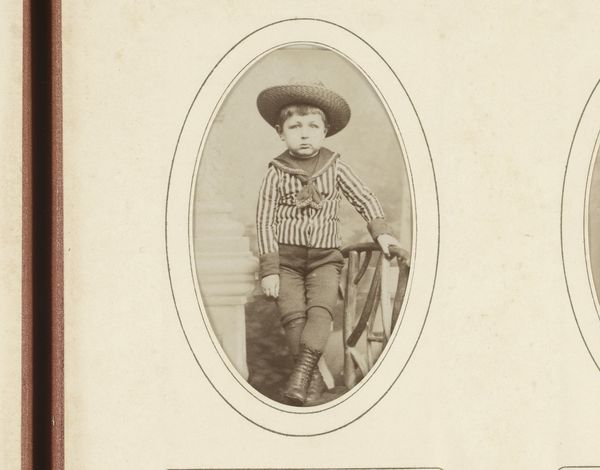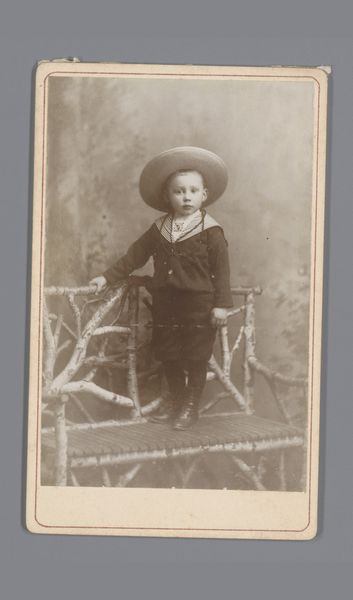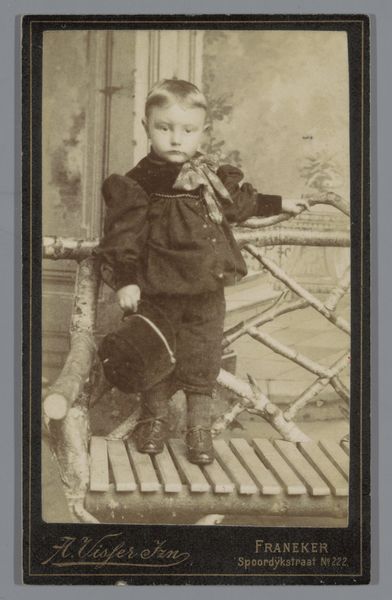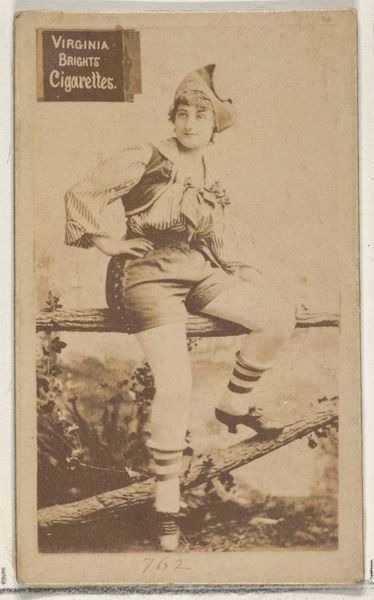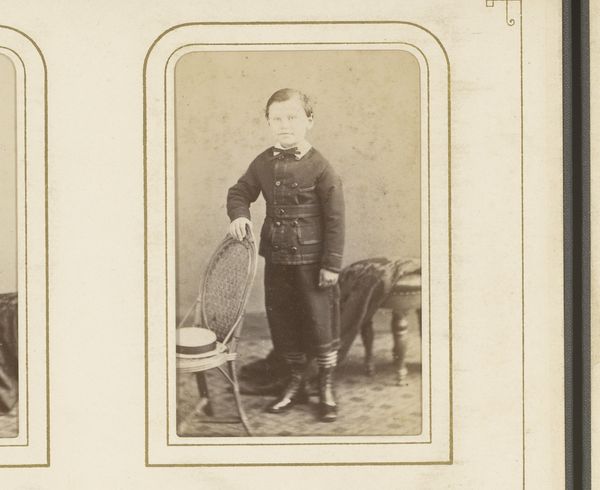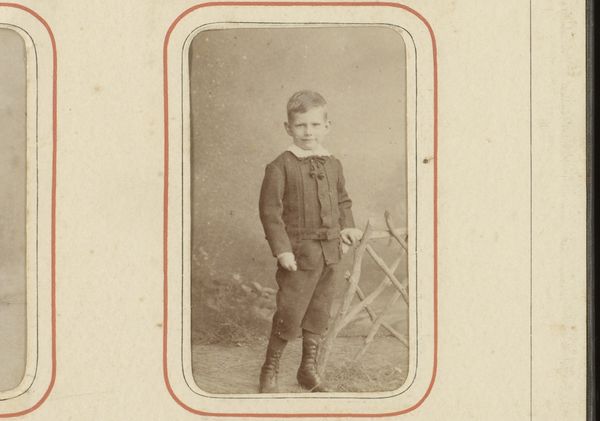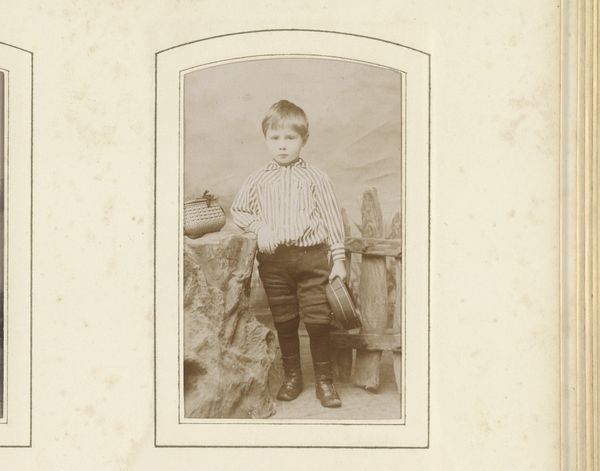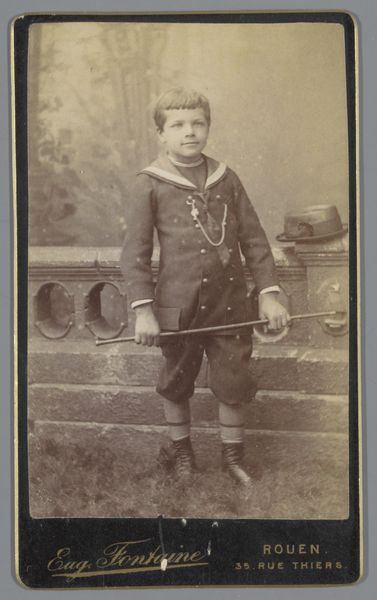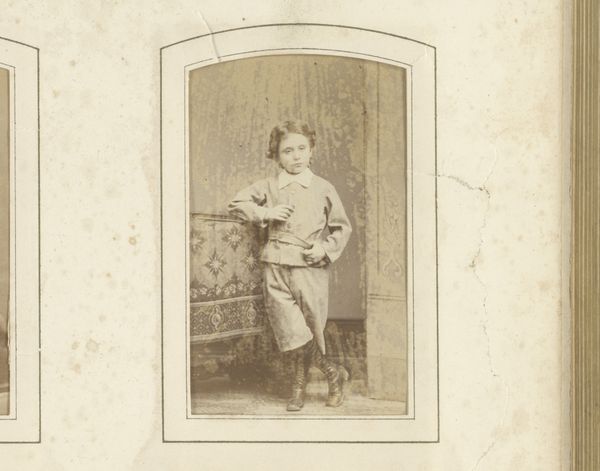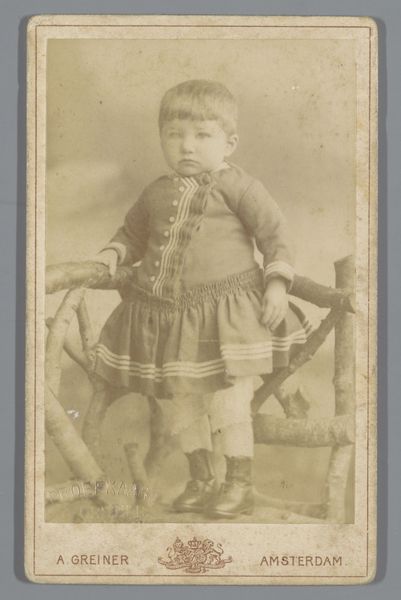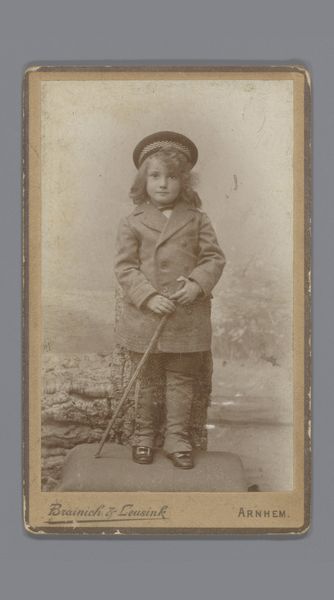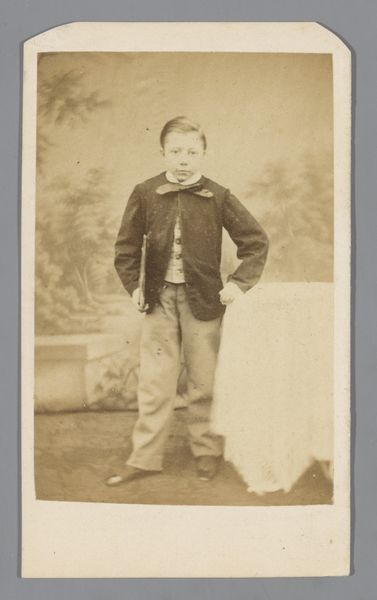
Eugen Wachenheimer als jongetje, gekleed in een gestreept pak met laarzen aan, hoed op zijn hoofd en stok in zijn handen, leunend tegen een stoel 1889 - 1896
0:00
0:00
photography
#
portrait
#
photography
#
old-timey
#
framed image
#
19th century
#
realism
Dimensions: height 105 mm, width 60 mm
Copyright: Rijks Museum: Open Domain
Editor: Here we have a photograph from somewhere between 1889 and 1896 by J. Kraemer. It’s titled "Eugen Wachenheimer as jongetje, gekleed in een gestreept pak met laarzen aan, hoed op zijn hoofd en stok in zijn handen, leunend tegen een stoel," so we know exactly who it is! It really evokes a feeling of... old-world formality. What's your take on it? Curator: Considering it’s a photograph, I immediately look to the material conditions of its production. Photography, in this period, offered a new means of mass image production, challenging older forms of portraiture that were the domain of the wealthy, right? Editor: Absolutely. Curator: This photo, like many others from the late 19th century, would have been made possible by advances in chemistry and manufacturing. Think about the glass plates used for negatives, the specific paper stock, the developing processes… Even the striped suit the boy wears speaks to the rise of industrial textile production, making fashionable clothing more accessible. How would those details reflect social realities? Editor: So, you're saying that even a seemingly straightforward portrait like this is loaded with information about industrial processes and consumption patterns. It’s not just about who's in the photo, but how it came to be made and the implications of its material existence. I hadn't thought about the textiles being related! Curator: Exactly! Even the backdrop is likely a commercially produced studio prop. Each element is manufactured or constructed and therefore reflective of the industrialized world and the specific labor required for those components. The global dynamics around labour shift once it can be outsourced and become more profitable, right? Editor: I see that the photograph as a material object is so linked to broader histories of labor and production... Curator: Precisely! Now think, how can we investigate all those layers? Editor: This completely changes how I view not only photography but portraiture in general. Looking beyond the surface to uncover those processes… that’s incredibly insightful.
Comments
No comments
Be the first to comment and join the conversation on the ultimate creative platform.
